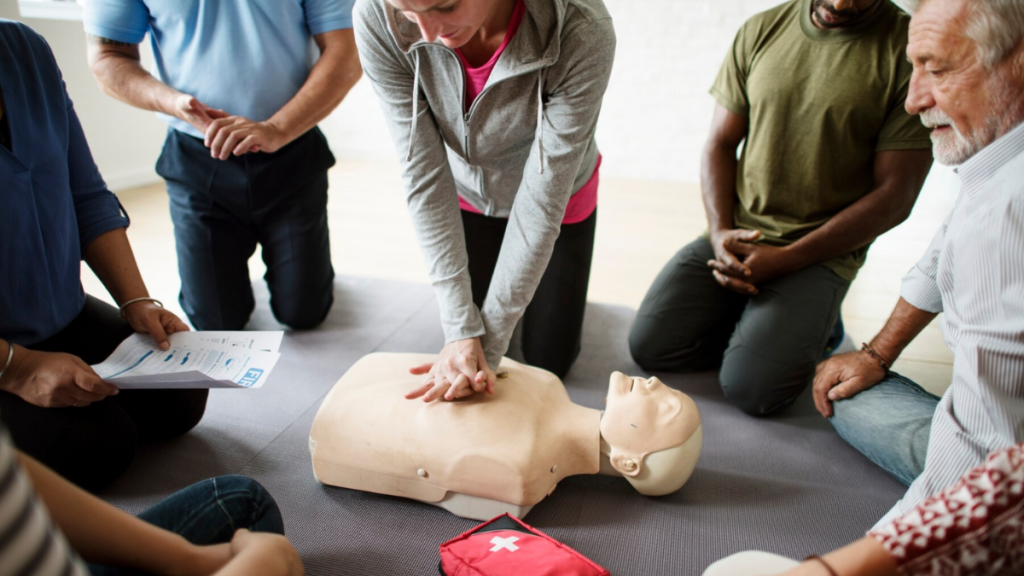Introduction
Imagine enjoying a regular meal with friends when suddenly, one of them begins to choke and collapses, becoming unresponsive. It’s a frightening situation, but knowing the right steps can make the difference between life and death. In such scenarios, understanding the key differences and steps of CPR (Cardiopulmonary Resuscitation) for unresponsive choking adults is crucial.
This article aims to equip you with the knowledge to act confidently and effectively. We will cover the critical variances between standard CPR and the technique needed for choking incidents, the detailed steps to follow, and some personal insights on why learning these skills is incredibly empowering.
Recognizing the Signs of Choking
The first step in effectively responding to an emergency is recognizing choking. An unresponsive choking person may not show the classic universal choking sign—hands around the neck—making rapid identification essential.
Common Indicators of Choking
- Sudden inability to talk.
- No coughing or futile attempts to cough.
- Clutching the throat.
- Anxiety or distressed expressions as they struggle to breathe.
- Bluish skin color due to lack of oxygen.
Quick recognition of choking signs can significantly improve the chance of a successful intervention.
Key Differences: CPR for Choking vs. Standard CPR
Regular CPR is primarily used when an individual stops breathing or their heart ceases beating, often due to cardiac arrest. However, CPR adapted for choking involves additional steps to remove the obstruction before ensuring breathing and circulation.
Differences to Note
- Focus on Airway: For a choking victim, your initial focus is on clearing the airway.
- Chest Compressions and Abdominal Thrusts: You’ll incorporate abdominal thrusts to attempt to dislodge the object, if safe.
- Integration with CPR Steps: If unresponsive, both actions may be needed in conjunction with CPR.
Steps to Perform CPR for Unresponsive Choking Adults
Now, let’s dive into the detailed procedure for assisting an unresponsive adult who is choking. These steps are guided by the American Heart Association’s techniques and other recognized health agencies.
Step 1: Assess the Situation
- Ensure Safety: Make sure the environment is safe for you and the victim.
- Check Responsiveness: Gently shake the victim’s shoulders and ask loudly, “Are you OK?”
Step 2: Call for Help
- Dial Emergency Services: If there’s no response, immediately call emergency services or ask a bystander to do so.
Step 3: Begin CPR with Airway Focus
- Open Airway: Tilt the victim’s head back slightly to open the airway and check for any visible obstruction.
- Deliver Chest Compressions: Start compressions without delay. Position your hands in the center of the chest, and press hard and fast, about 100-120 compressions per minute.
- Incorporate Rescue Breaths: If trained, give two rescue breaths after every 30 compressions by pinching the nose shut, sealing your lips over theirs, and breathing in.
Providing consistent chest compressions is vital to circulate oxygen-carrying blood to vital organs.
Step 4: Attempt to Clear the Airway
- After compressions, if you see an object in the throat, attempt to remove it only if visible—do not perform blind sweeping with fingers as it may push the object further.
Step 5: Repeat and Monitor
- Continue cycles of CPR, continually checking the airway after each set of compressions and aligning with the emergency team’s instructions upon their arrival.
The Power of Preparedness
Learning CPR vital skills not only prepares you for possible emergencies but also empowers you to make a significant impact on someone’s life. Training programs are readily available through various health organizations, offering in-person and online courses.
Personal Experience: Making a Difference
I recall a time when this very knowledge saved a relative’s life at a family gathering. The feeling of empowerment and the gratitude from my loved ones was indescribable, reinforcing the importance of being prepared.
Conclusion
Mastering CPR for unresponsive choking adults involves understanding crucial differences and executing precise steps to save a life. By ensuring you’re well-versed in these techniques, you’re not just enhancing your skills—you’re contributing to a safer community.

